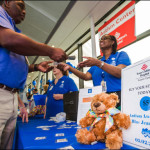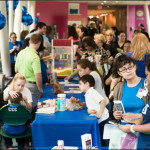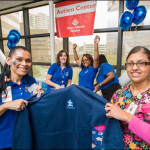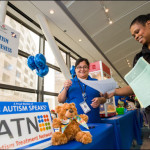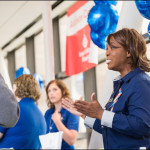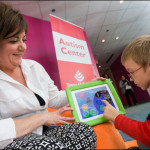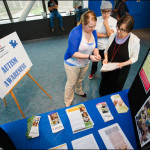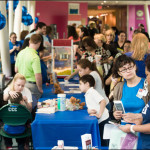
In the summer of 2012, a then 6-year-old little girl, Mayah Villarreal, began to write with her left hand instead of her right. Her kindergarten teacher mentioned it to Mayah’s mom, Ashley, but told her not to worry as it was common in young children. A few weeks later while taking a bath, Ashley noticed that Mayah began to lean her body to the right and could not sit up straight. Soon she could not lift her right leg on her own to do simple, everyday tasks. Mayah, a formerly active young girl who loves gymnastics, had never shown any signs of a movement disorder and now her life had come to all but a halt, as she was unable to function normally.
Mayah was originally diagnosed in her hometown of Alton with a chiari malformation, and doctors recommended that Mayah undergo a craniotomy surgery, which she had in October 2012. A few days prior to the surgery, Mayah had stopped walking completely and was suffering from debilitating headaches.
After the surgery, there was no improvement in Mayah’s condition. In fact, it continued to worsen and she landed in a local hospital where she was admitted for two days and was told her condition was psychological. One of the doctors on call at the time called Texas Children’s Hospital and after a brief conversation, the Kangaroo Crew team picked Mayah up and flew her to Houston.
Mayah was admitted to the Blue Bird Circle Clinic where they diagnosed her with an extremely rare pediatric movement disorder called dystonia. Dystonia from each individual genetic etiology is rare, and in DYT 1, which is what Mayah has, the disease frequency in Ashkenazi Jews is estimated at 1:3000-1:9000. Among non-Jews, the prevalence is lower.
The team at the Blue Bird Circle Clinic, including Dr. Amber Stocco, former director of the hospital’s movement disorder clinic and Dr. Daniel Curry, director of pediatric surgical epilepsy and functional neurosurgery, developed a course of care that included an aggressive and innovative treatment plan. Stocco recommended deep brain stimulation (DBS) to treat Mayah’s condition. Commonly used for Parkinson’s patients, the use of DBS in pediatric patients is still limited as there are only a few experienced centers worldwide and few patients meet the criteria to qualify for DBS.
“Until recently there have been only case reports of DBS in children,” said Stocco, of this innovative approach. “It is starting to gain acceptance in pediatric centers; however, to date, there are likely less than 300 cases of DBS in children internationally.”
In order to administer DBS to Mayah, Stocco, Curry and the team implanted a small, programmable battery in the upper chest region, near her shoulder. The battery connected to a series of electrodes that targeted specific parts of her brain to block the abnormal brain activity that prevented her from controlling her own muscle movements.
Soon after surgery, Ashley noticed a change in Mayah’s behavior. “Soon after surgery, before the device was even fully programmed to a higher level, we saw Mayah’s condition improving. Every day, we watched Mayah become more and more independent.”
On August 10, 2013, Mayah walked unassisted for the first time since the summer of 2012.
Thanks to Dr. Stocco and Dr. Curry’s innovative approach, Mayah’s case proved to be an extraordinary outcome and story of success. The DBS has returned Mayah’s motor skills to normal and she is happily back enjoying gymnastics. Her implant requires minimal maintenance, needing a charge for just a few minutes every week.
Mayah’s case is amongst the most remarkable of recoveries. Until recently there have only been case reports about using DBS in children and is now starting to gain acceptance among pediatric hospitals, with Texas Children’s at the forefront.






 1. Get into a routine – start pumping before you return to work, if possible. Get your body used to the pump and try to pump the same times you would at work so your body gets into a rhythm. This will make it less of an adjustment when you return to work because you’ll already have a routine established.
1. Get into a routine – start pumping before you return to work, if possible. Get your body used to the pump and try to pump the same times you would at work so your body gets into a rhythm. This will make it less of an adjustment when you return to work because you’ll already have a routine established. 7. Be productive – though pumping limits what you can do, there are ways to make that time count. Answer emails on your smartphone, tablet or laptop, review lengthier documents that require proofing or clean out and organize your inbox. You could also pump during your lunch break and eat at the same time. If you’re using your lunch break to pump, make that your “me time” which you don’t get a lot of as a new mom and do something you enjoy!
7. Be productive – though pumping limits what you can do, there are ways to make that time count. Answer emails on your smartphone, tablet or laptop, review lengthier documents that require proofing or clean out and organize your inbox. You could also pump during your lunch break and eat at the same time. If you’re using your lunch break to pump, make that your “me time” which you don’t get a lot of as a new mom and do something you enjoy!